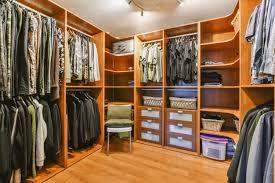Custom walk in closets offer a practical solution to maximize storage and improve organization in any home. They are designed to fit individual needs, making it easier to keep clothing, shoes, and accessories neatly arranged while enhancing the overall space’s functionality.A well-designed custom walk-in closet combines tailored storage options with efficient use of space, making it easier to maintain order and access belongings quickly. From built-in shelving to drawers and hanging areas, these closets adapt to different lifestyles and preferences, adding value and convenience.Many options are available, including different finishes, layouts, and accessories, allowing customization to match personal style and home decor. This flexibility makes custom walk-in closets a popular choice for those seeking both organization and aesthetic appeal.
Designing Custom Walk In Closets
Effective custom walk-in closets optimize every inch of space with organized storage solutions and thoughtfully chosen materials. The design process involves careful planning of layout, selection of personalized storage options, and decisions about finishes that balance durability and style.
Space Planning and Layout
Space planning starts with measuring the room precisely to understand its dimensions and shape. This step ensures that fixtures fit correctly, leaving room for free movement and ease of access.Designers consider vertical and horizontal space, using walls efficiently with shelves, rods, and cubbies. Clear pathways must be maintained to allow dressing and reaching for items comfortably.Proper lighting placement is included to enhance visibility throughout the closet. This might involve adding overhead fixtures, built-in LED strips, or accent lights near storage areas.
Key elements in layout include:
- Shelf height and spacing suited to the items stored
- Hanging sections for short and long garments
- Designated areas for accessories and shoes
Customization Options for Storage
Customization tailors the closet to the user’s specific wardrobe and lifestyle needs. Adjustable shelves, pull-out drawers, and modular compartments help adapt storage over time.Closets often feature specialized inserts such as tie racks, belt hangers, jewelry trays, and shoe cubbies. Multi-level hanging rods are useful to separate types of clothing efficiently.Some designs incorporate islands or benches for folding clothes or laying out outfits. These can include additional drawer storage underneath.Accessories like hooks, baskets, and shelf dividers further enhance organization. Flexibility in design allows users to reconfigure interiors as their preferences change.
Material and Finish Selection
Materials affect durability, ease of maintenance, and overall aesthetics. Common options include plywood, MDF, solid wood, and laminate.
Finishes range from:
- Matte or glossy paint
- Natural wood stains
- Veneers mimicking exotic woods
Durable surfaces resist scratches and humidity, essential for closet longevity. Finishes should also complement the home’s décor to create a cohesive look.Hardware such as handles and drawer slides is selected for smooth operation and style consistency. High-quality fittings extend the lifespan of the closet system.
Installation and Maintenance
Proper installation and regular maintenance are crucial to ensure the custom walk-in closet functions well and lasts over time. Attention to detail during setup and consistent care help preserve both the appearance and utility of the closet system.
Professional Installation Process
A professional installation begins with a detailed design consultation to assess space and customer preferences. Experts take accurate measurements and identify optimal placement for shelves, rods, and drawers.Installation teams use specialized tools and hardware to securely anchor components to walls and floors. This ensures stability and prevents shifting under heavy loads. Skilled installers also address any complications, such as uneven walls or limited space, to maximize storage efficiency.Typical installation time ranges from a few hours to a day depending on the complexity. Professionals often handle cleanup, leaving the area ready for immediate use. Hiring qualified installers reduces the risk of damage and ensures warranties remain valid.
Upkeep and Longevity
Maintaining a custom walk-in closets involves routine cleaning and periodic checks of fixtures. Surfaces should be dusted regularly with non-abrasive cloths. Avoid excessive moisture to protect wood finishes and prevent mold.Hardware like hinges and drawer slides benefit from occasional lubrication to maintain smooth operation. Inspect shelving brackets and wall mounts every few months for looseness or wear.For long-lasting performance, avoid overloading shelves beyond recommended weight limits. Using organizers and dividers can reduce clutter and minimize damage to storage elements. Promptly repairing minor issues prevents them from escalating into costly repairs.

